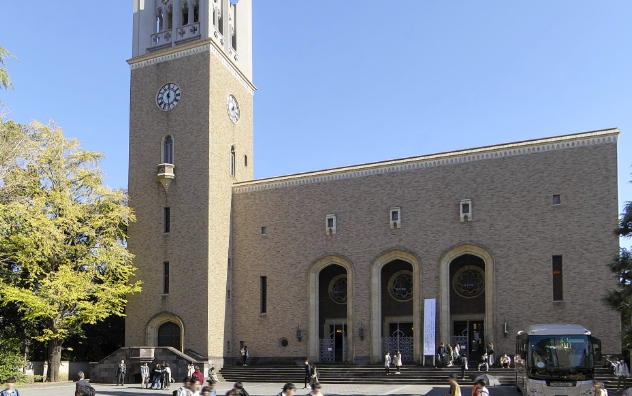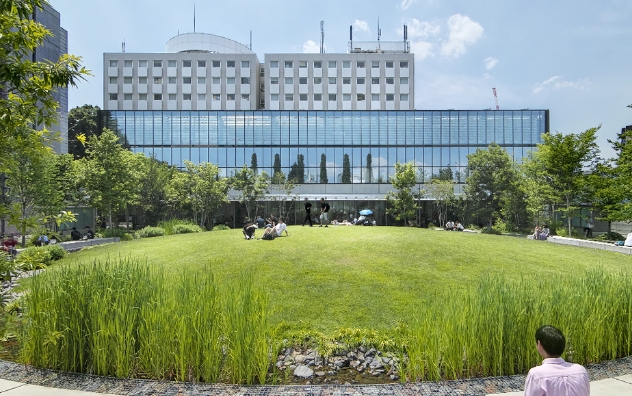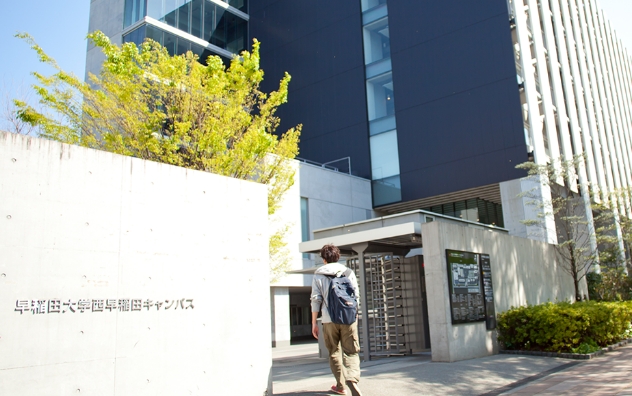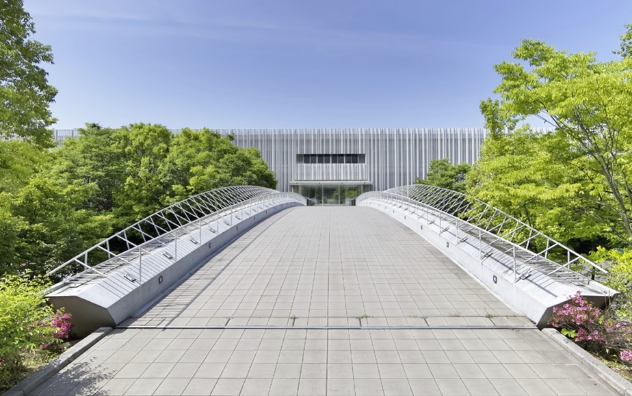“Natsume Soseki and Modernity” – international symposium remembering one of modern Japanese literature’s most iconic figures
Wed, Jun 10, 2015-
Tags
A symposium looking back on Soseki’s legacy
Professor Kunihiko Nakajima, Faculty of Letters, Arts and Sciences
Director of Comparative Literature Research Office and Symposium Coordinator
On May 16, the Research Institute of Letters, Arts and Sciences hosted an international symposium on one of modern Japanese literature’s most iconic figures, Natsume Soseki. The symposium which looked back on the legacy of Soseki 100 years after his death was held at Waseda’s International Conference Center (Masaru Ibuka Auditorium). The forum is part of a series of annual international forums hosted by The Research Institute of Letters, Arts, and Sciences since its establishment in 2012. This forum on Soseki was organized by Waseda’s more than 50 years old research institute of comparative literature and received support from Shinjiku Ward, Iwanami Shoten Publishers, The Asahi Shimbun, and The Executive Committee of the Soseki Anniversary.
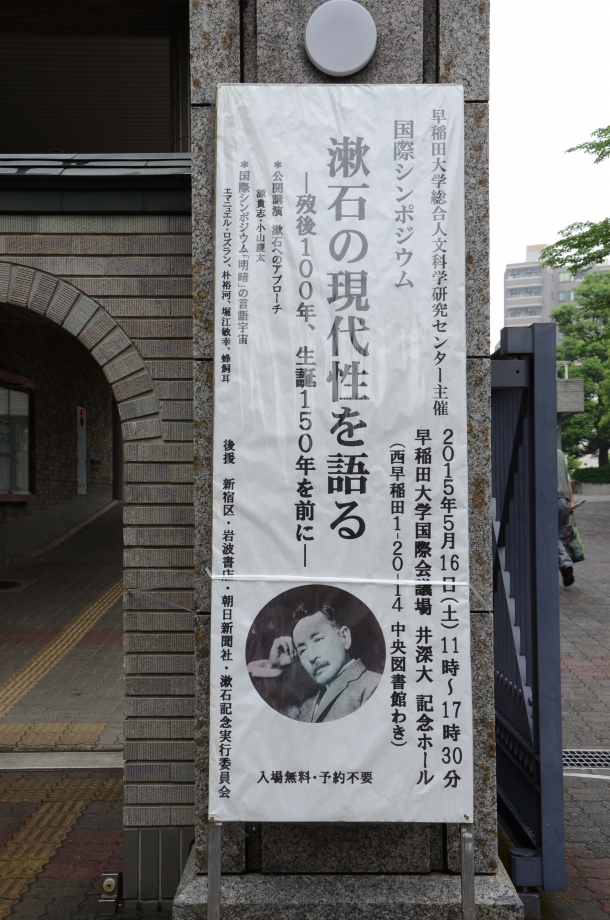
2016 marks the 100th year since Soseki’s death and 2017 the 150th year since his birth. Soseki was born in Ushigome Babashitayokocho in Edo (present-day Kikuicho, Shinjuku) and spent his later years in Waseda Minami-cho, both areas close to Waseda University. During his younger years, Soseki worked as an English language lecturer at Tokyo College, Waseda University’s predecessor. I am delighted participants from various fields and locations gathered at this Waseda symposium considering the university’s relationship and history with the iconic writer. Soseki researchers, students of literature, and students from and outside of Waseda attended to hear six panelists discuss Soseki’s legacy.
During the morning portion of the symposium, Professor Takashi Minamoto (School of Culture, Media and Society) discussed the relationship between Soseki and early modern Russian writers such as Leonid Andreyev. Professor Kieta Koyama (Faculty of Social Sciences) followed Minamoto and shed light on Soseki’s interest in science. Both speakers discussed the historical and intellectual context in which Soseki produced his works.

In the afternoon session, international academics of modern Japanese literature participated in a panel discussion where they enthusiastically discussed Soseki’s final and unfinished work “Light and Darkness.” Before the symposium, the four keynote speakers selected and presented memorable excerpts from the novel. Audience members were given their own copy of the excerpts and read along as speakers provided commentary.
Professor Emmanuel Lozerand from France’s National Institute of Oriental Language and Civilization analyzed conversations among the novel’s characters. Professor Park Yu-ha from Sejong University commentated on the character Kobayashi and discussed conflicts that materialized between residents and immigrants. Author and Professor Toshiyuki Horie (Faculty of Letters, Arts and Sciences) focused his attention on the work’s origins and the circumstances surrounding its publication as a serialized novel. Lastly, poet Mimi Hachikai discussed Soseki’s literary techniques, particularly in relation to poetic word play and foreshadowing techniques of significant events such as the reunion between protagonist Tsuda and his former lover Kiyoko.
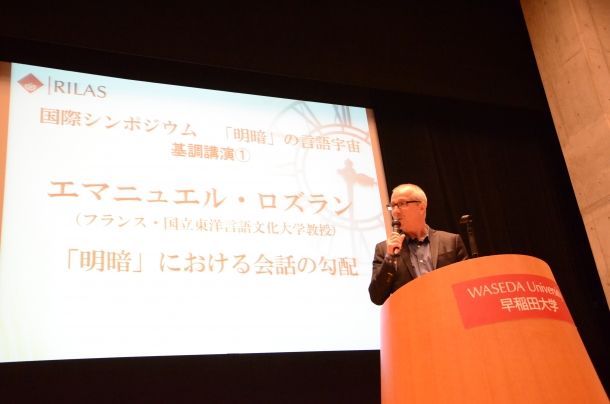
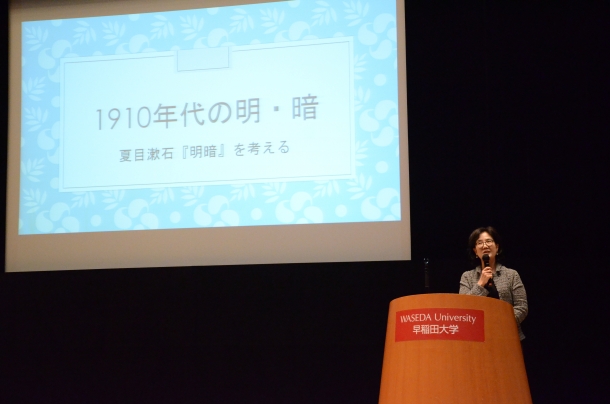
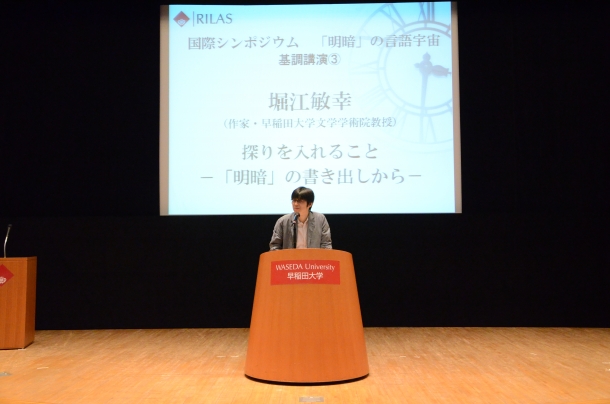
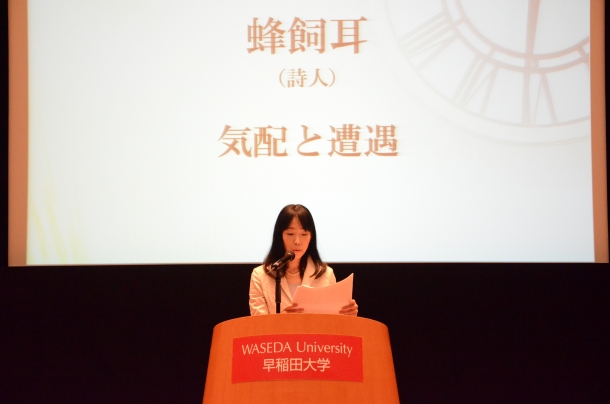
The panel’s discussion emphasized the importance of not just reading literary classics, but also paying special attention to details and nuances in order to comprehend their true meaning. Panelists answered questions and discussed various aspects of “Light and Darkness” with the audience. One topic discussed surrounded Tsuda’s former friend Kobayashi who from a narrative context threatens Tsuda’s existence. The symposium was titled “Soseki and Modernity” in order to avoid the tendency of viewing his works from an outside perspective. By reading works based on an understanding of word play and meaning, the concept of “modernity” begins to materialize. I believe our earnest discussion and exchange of ideas regarding “Light and Darkness” shed light on the “modernity” of the work. The discussions of this symposium are set to be published in the online research journal WASEDA RILAS JOURNAL at the end of October.
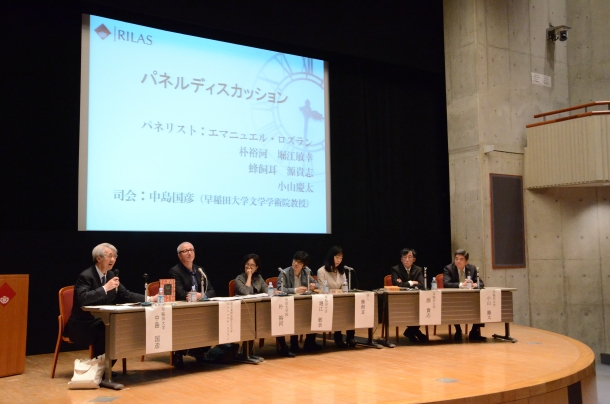
On May 19, Professor Lozerand hosted an incredibly interesting workshop on the status of Japanese literature translation and research in France, focusing on Soseki and Ogai Mori. Lozerand discussed how numerous translations of Soseki and Mori are in circulation among French readers. Approximately 50 researchers, graduate students, and guests attended the workshop.


